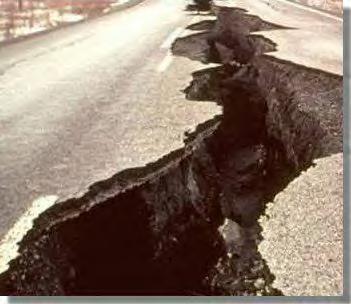
LIQUEFACTION
A secondary effect, and one that caused numerous damage throughout south-central Alaska was that if liquefaction. This occurs when water saturated sands or silts shake violently. The water pressure forces the sand grains apart causing the material to act as a liquid. The violent ground motion triggered numerous rockslides, snow avalanches, and landslides throughout the area. Mud spouts, slumping and subsidence resulted from compaction; sand boils were produced. Cracks and pressure ridges were also observed in the lake.

Photo Courtesy of
http://www.ce.washington.edu/~liquefaction/html/quakes/alaska/crack.html